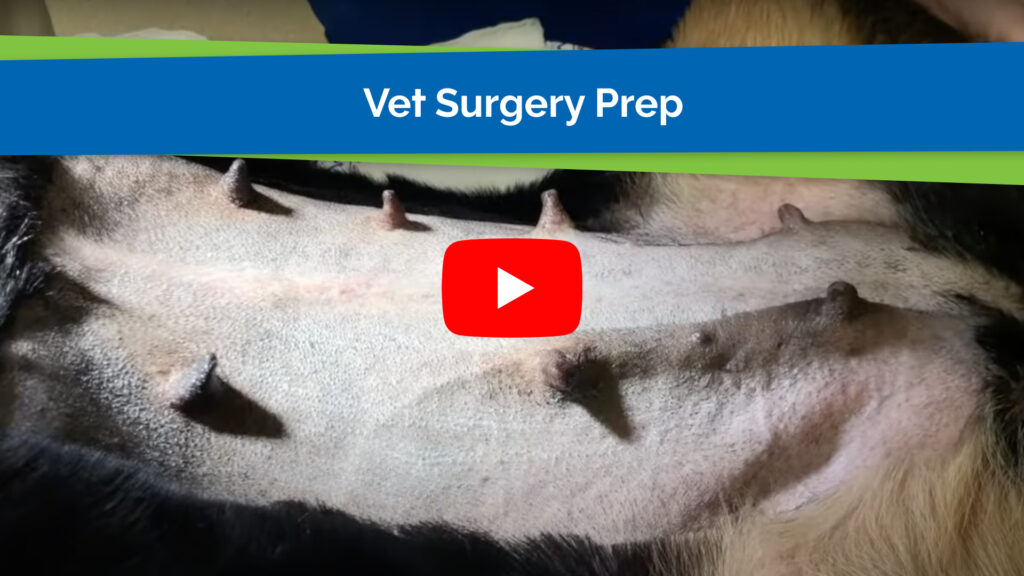When preparing for anesthesia, the primary cause of infection after surgery comes from the bacteria that remains on the skin. Keeping the skin clean is extremely important and we do that by clipping the hair to remove that source of bacteria and then scrub the skin clean. One of the things you can do as a pet owner if your dog is about to have surgery is give them a really good bath the day before. Getting them clean before we see them makes a big difference when we get ready to proceed with the surgery.
The problem with bacteria is that we can’t see it and we don’t know where the bacteria is on the skin. When we clean the skin during surgery prep we start at the center where the surgical site is and move outward. This makes sure the cleanest spot is in the middle where the surgery will occur and if any bacteria is picked up it will be dragged to the outside away from the incision. We do this process multiple times to make sure the skin is thoroughly cleaned.
After cleaning the pet, Dr. Smith prepares himself for surgery. He starts by taking his lab coat off as it serves as a protector and shield against all the germs of the world. By taking the outer cover off he has his clean clothes underneath. Before going into the surgery room, he changes his shoes to ones that he only wears in surgery so no bacteria is dragged in with his work shoes. He then goes through the same scrubbing process on himself as they do on the pet being prepared for surgery. Dr. Smith scrubs his hands three times and even makes sure to get every fingernail and both sides of each finger. He goes through this methodical process to make sure every area is cleaned. This is necessary since we aren’t able to see the bacteria on our skin. To make sure all the bacteria is gone he repeats this process three times.
Back in the surgery room, we use sterilized gloves as well as sterilized gauze when cleaning the skin of the pet one last time before it goes into surgery. This allows us to have the cleanest possible surgery site that we can have. After Dr. Smith is cleaned up, he puts on his sterile gloves and smock and begins the final steps before surgery. Having sterile materials means there is no bacteria on it and although you can’t sterilize the skin of the pet, it has been cleaned thoroughly and properly. A sterile drape is placed over most of the pet’s body with only the surgery site exposed. By doing this, there is only a limited amount of bacteria exposed that can contaminate the surgery.
The dog that was used in the video demonstration was adopted from the Danville Humane Society. When you are thinking about getting a new pet, always think about going to the shelter first.

